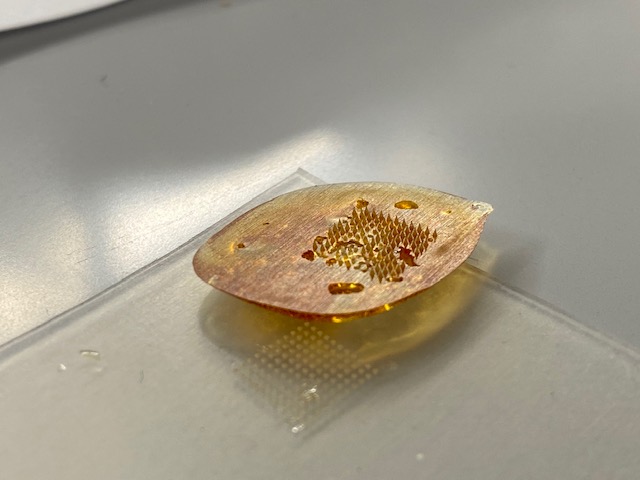Honey Microneedles
This project is started by Dr. Galit Frydman at the Center for Biomedical Engineering and was brought in as a community project for the BioMaker Space.
Because of the beneficial nature of Manuka honey in being a bactericidal and soothing agent for wounds, we are working on perfecting the production of microneedles with this particular honey to augment the microneedles effect. Microneedles are an FDA approved technique to stimulate wound-healing, which shows lots of promise in patients with chronic wounds or burn injuries. We are looking at how different production methods for microneedles differentially impact the honey’s efficacy as a bactericidal agent and cell toxicity levels. We are also investigating manuka honey’s effect on the immune system using HL60’s to track migration and activity levels.

Terrachip
This project was initially developed as part of NEET Living Machines (20.051) with Rachel Shen, Melody Wu and Janice Tjan and will be developed further in the BioMaker Space.
Soil salinity is a major problem in agriculture, and occurs as a result of irrigation, which generates salt gradients across the growing zone of the plant root. This could affect the rhizosphere, the microbial community that develops around the roots and affects plant health. While initial studies have looked at the rhizosphere root interactions, not much has been done in understanding how these relationships change in response to a salt gradient. Here we create a simulated microfluidic platform to the rhizosphere in a salinity gradient, with different velocities, and combinations of common microbes in the rhizosphere. With this chip we can further simulate the effects of different irrigation techniques on the rhizosphere as an effect of altered salt profiles simulating soil profiles in agriculture and in natural systems. This chip will allow for further insight into better understanding the rhizosphere in a wide variety of different soil environments.
iGEM 2019 – Cell Swarming Project
This project began as the MIT iGEM 2019 team’s project in the Weiss Lab and was brought in as a community project for the space to introduce people to synthetic biology and immune/mammalian cell engineering!
Cell coordination within a population depends on the ability of individual cells to accurately receive and respond to extracellular stimuli from both the environment and neighboring cells. Coordinating cellular motility, where cells move in response to external cues, is central to many physiological responses. For example, human neutrophils demonstrate migratory behavior towards chemokine gradients as part of the adaptive immune system. Here, we present a mechanism to harness cellular chemotaxis as a means of controlling cellular swarming and directed movement. We engineered human embryonic kidney (HEK) cells to secrete chemokines that induce chemotaxis in unengineered neutrophils. To evaluate neutrophil chemotaxis, we first differentiated HL-60 progenitor cells into chemotactic motile cells. We then introduced these motile cells to chemokines produced by our engineered HEK cells and evaluated their movement utilizing a series of cellular migration assays. We anticipate our engineered system will provide insight into how immune systems develop as well as form a preliminary toolbox for recruiting mammalian cells selectively in tissue engineering applications.

